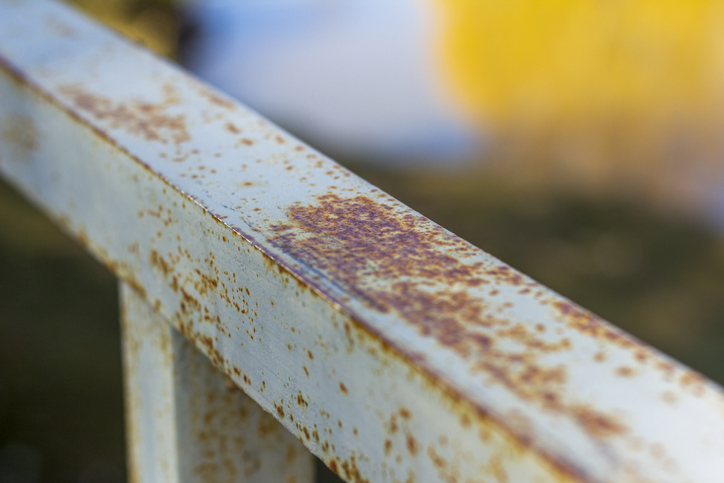
| The corrosion of metals is a destructive process that leads to huge economic losses. According to the World Corrosion Organisation, the costs of corrosion are estimated to exceed $1.8 trillion worldwide. Dr Karan Thanawala, a research scholar at the IITB-Monash Research Academy and a member of the Chemwatch team, hopes to help bring this number down significantly. Karan explains that corrosion of metallic objects is the result of an electrochemical reaction occurring at the surface involving the oxidation of the metal in the presence of electrolyte and oxygen. The efforts taken for the prevention of corrosion are the use of alternative material and design of component, and/or application of a suitable protective coating, depending on the type of environmental conditions and the expected life. Of these, the most common and efficient approach to controlling corrosion is the application of organic polymer-based coatings. However, applied on the outermost layer of these structures, these coatings are susceptible to micro/nano-level damage and scratches during handling and service. This kind of damage is hard to detect, allowing the corrosion process to worsen and ultimately render the protective coating useless. Therefore, says Karan, it is a more attractive concept to design and develop coatings that have the ability to heal the damage, thereby maintaining the protective properties. Encapsulation of Linseed Oil and Tung Oil in urea-formaldehyde shells was performed using in-situ polymerization technique. Optimization of process parameters for preparation of microcapsules were carried out using calculated amounts of oil and urea-formaldehyde, that were subjected to formation of spherical microcapsules of 25-45 µm size, that depend on the reaction time and stirring speed. The microcapsules thus prepared were analyzed using optical microscopy (OM), scanning electron microscopy (SEM) and Fourier transform infrared spectroscopy (FT-IR), for ensuring the encapsulation of oil in the thin shells of urea-formaldehyde. Thin film self-healing coatings with uniform and quick self-healing ability were achieved with microcapsules at an optimized concentration of 3 wt%. The anti-corrosive performance was evaluated using immersion test and electrochemical impedance spectroscopy (EIS). Explaining further on his research, Karan states, “Development of self-healing coatings posed great challenges. The most important factor was to achieve reproducibility of size, shape and morphology of prepared microcapsules, which when added into the coating, delivers the smart healing functionality. The critical parameters of synthesis process such as stirring speed and reaction time were optimized, which dominates formation of size and shape of the microcapsules. Additionally, the components of the microcapsules have been selected on the basis of their biocompatibility and non-hazardous nature, which classifies them as green materials. These prepared microcapsules were dispersed in the organic coating in varying concentrations. These microcapsule-impregnated coatings, after complete curing, were induced with an artificial scribe, before corrosion test in a saline solution (similar to sea water) for evaluation of the performance of the coatings. The effect of addition of the microcapsules on the self-healing functionality was investigated using optical microscopy. The coatings were further analysed for mechanical and adhesion properties for use as commercial industrial coatings. The results of self-healing coatings were comparable with the control coatings (without the microcapsules).” On what motivated Karan to focus his research on this area, he says, “Self-healing composites possess great potential for solving many limitations of polymeric coatings and structural materials, viz., micro cracks and hidden damages. Damages in the coating are the precursors to structural failure, and the ability to heal them will enable structures with longer lifetimes and less maintenance. Self-healing coatings mimic the natural healing process, similar to the healing of damaged skin. Therefore, self-healing coatings are very attractive as they can assure durability of the coated components even after damage in the coating due to chemical or mechanical reasons. The synthesis of microcapsules and formulating self-healing coatings pose great challenges. The size of microcapsules, shape and morphologies play an important role in providing an active functionality of rupturing and healing. Optimising the process to prepare tailored microcapsules allows great opportunity to try new methods, often exciting for a researcher.” Karan is confident that this breakthrough in the research of protective coatings will do a lot to solve some the corrosion problems we are faced with when using traditional polymeric coatings, which will ultimately ensure safer workplaces and communities. |
